
- Email support@dumps4free.com

Topic 5: Misc. Questions
You are building a database backup solution for a SQL Server database hosted on an
Azure virtual machine.
In the event of an Azure regional outage, you need to be able to restore the database
backups. The solution must minimize costs.
Which type of storage accounts should you use for the backups?
A.
locally-redundant storage (LRS)
B.
read-access geo-redundant storage (RA-GRS)
C.
zone-redundant storage (ZRS)
D.
geo-redundant storage
read-access geo-redundant storage (RA-GRS)
Explanation:
Geo-redundant storage (with GRS or GZRS) replicates your data to another physical
location in the secondary region to protect against regional outages. However, that data is
available to be read only if the customer or Microsoft initiates a failover from the primary to
secondary region. When you enable read access to the secondary region, your data is
available to be read if the primary region becomes unavailable. For read access to the
secondary region, enable read-access geo-redundant storage (RA-GRS) or read-access
geo-zone-redundant storage (RA-GZRS).
Reference:
https://docs.microsoft.com/en-us/azure/storage/common/storage-redundancy
You have an Azure SQL database that contains a table named Customer. Customer has
the columns shown in the following table.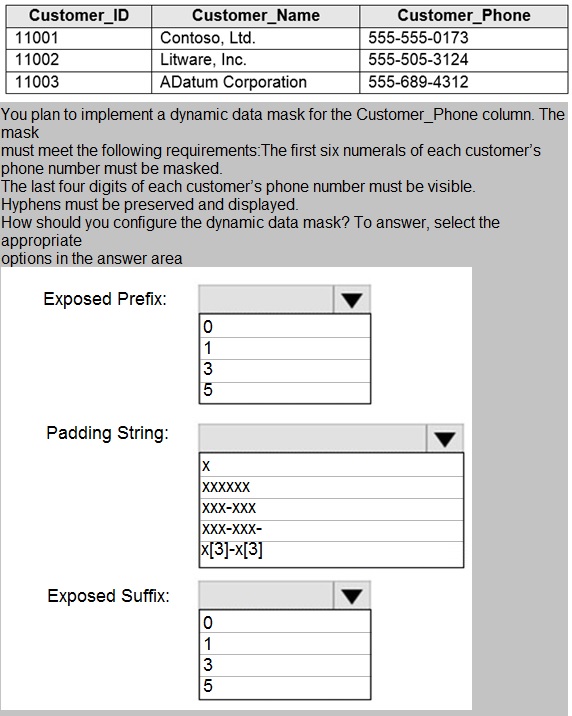
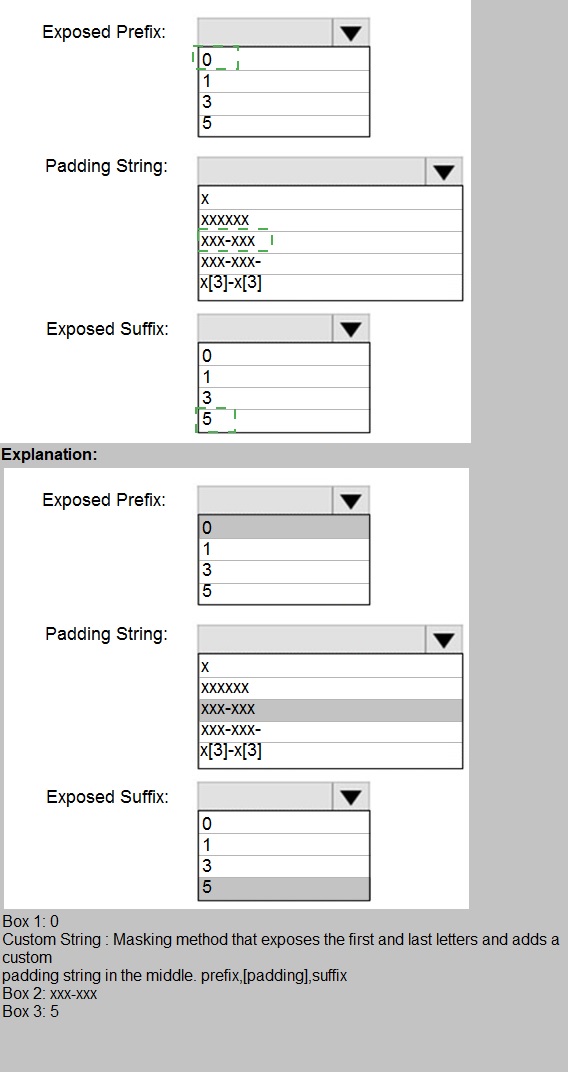
You have a Microsoft SQL Server database named DB1 that contains a table named
Table1.
The database role membership for a user named User1 is shown in the following exhibit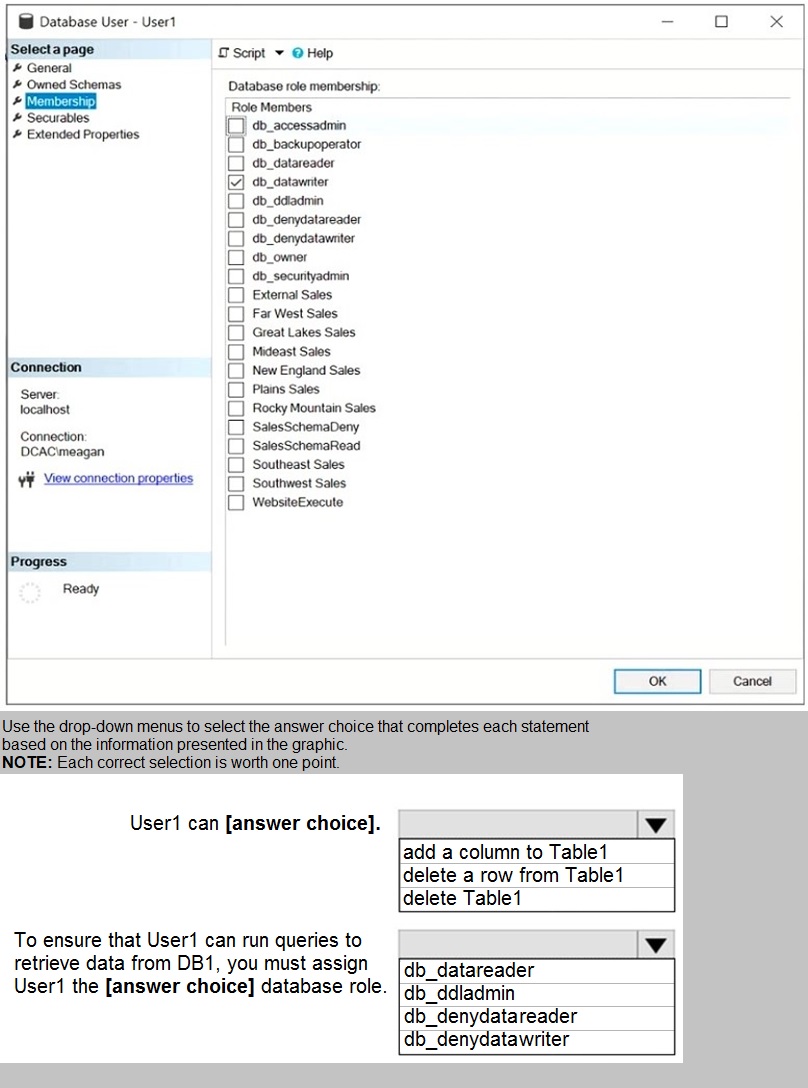
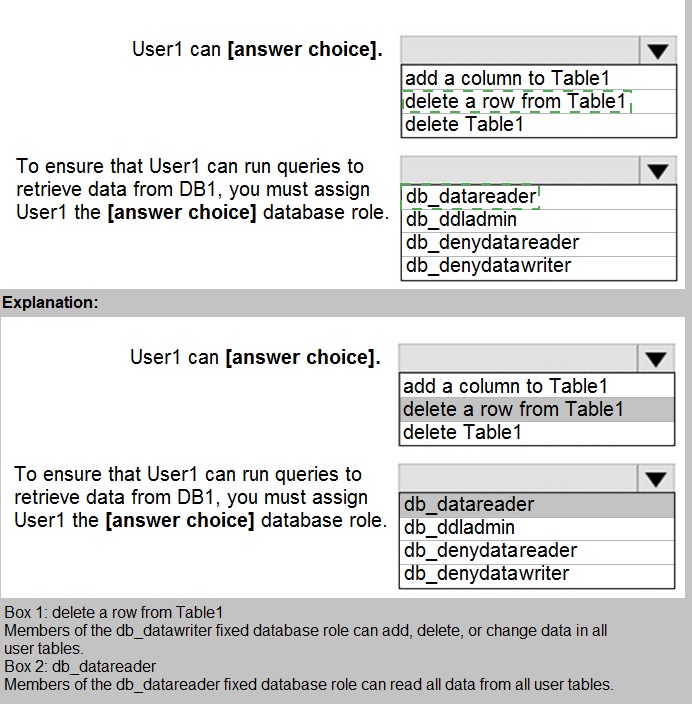
You have a resource group named App1Dev that contains an Azure SQL Database server
named DevServer1. DevServer1 contains an Azure SQL database named DB1. The
schema and permissions for DB1 are saved in a Microsoft SQL Server Data Tools (SSDT)
database project
You need to populate a new resource group named App1Test with the DB1 database and
an Azure SQL Server named TestServer1. The resources in App1Test must have the same
configurations as the resources in App1Dev.
Which four actions should you perform in sequence? To answer, move the appropriate
actions from the list of actions to the answer area and arrange them in the correct order.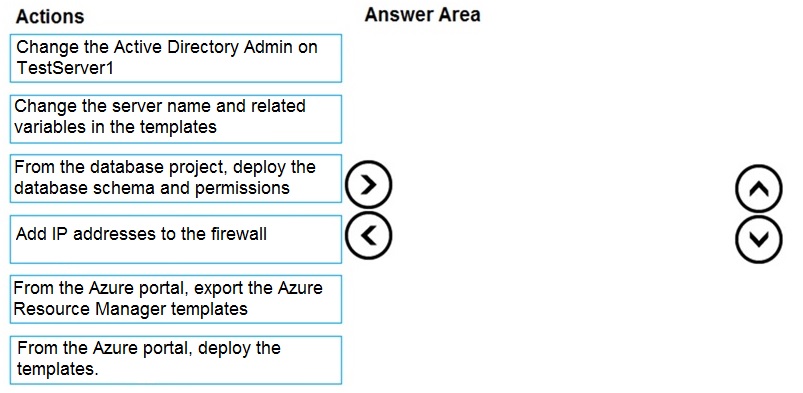
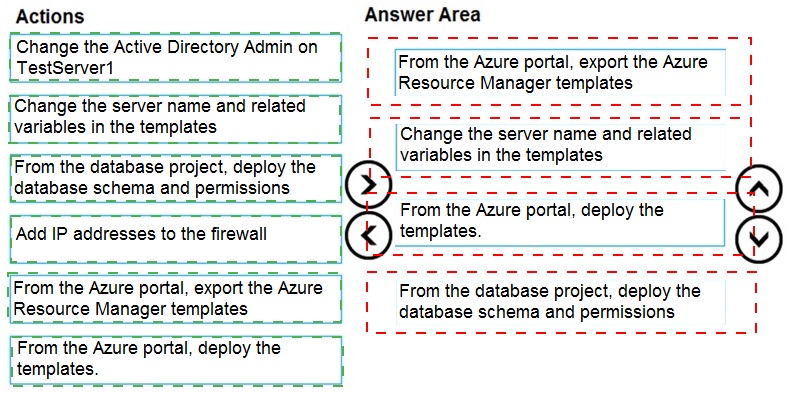
Note: This question is part of a series of questions that present the same scenario.
Each question in the series contains a unique solution that might meet the stated
goals. Some question sets might have more than one correct solution, while others
might not have a correct solution.
After you answer a question in this section, you will NOT be able to return to it. As a
result, these questions will not appear in the review screen.
You have an Azure SQL database named Sales.
You need to implement disaster recovery for Sales to meet the following requirements:
During normal operations, provide at least two readable copies of Sales.
Ensure that Sales remains available if a datacenter fails.
Solution: You deploy an Azure SQL database that uses the General Purpose service tier
and failover groups.
Does this meet the goal?
A.
Yes
B.
No
No
Explanation:
Instead deploy an Azure SQL database that uses the Business Critical service tier and
Availability Zones.
Note: Premium and Business Critical service tiers leverage the Premium availability model,
which integrates compute resources (sqlservr.exe process) and storage (locally attached
SSD) on a single node. High availability is achieved by replicating both compute and
storage to additional nodes creating a three to four-node cluster.
By default, the cluster of nodes for the premium availability model is created in the same
datacenter. With the introduction of Azure Availability Zones, SQL Database can place
different replicas of the Business Critical database to different availability zones in the
same region. To eliminate a single point of failure, the control ring is also duplicated across
multiple zones as three gateway rings (GW).
Reference:
https://docs.microsoft.com/en-us/azure/azure-sql/database/high-availability-sla
| Page 7 out of 44 Pages |
| Previous |